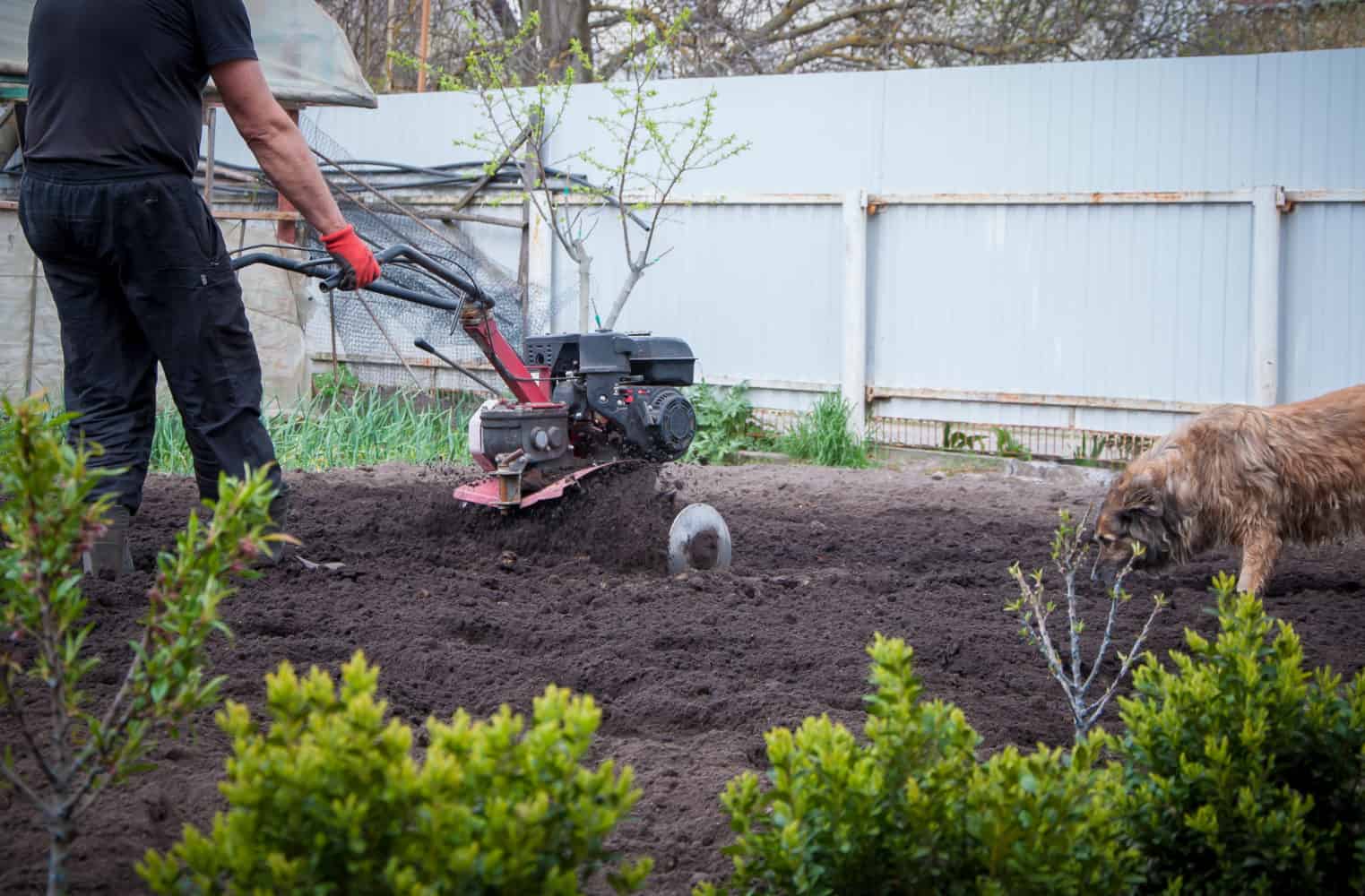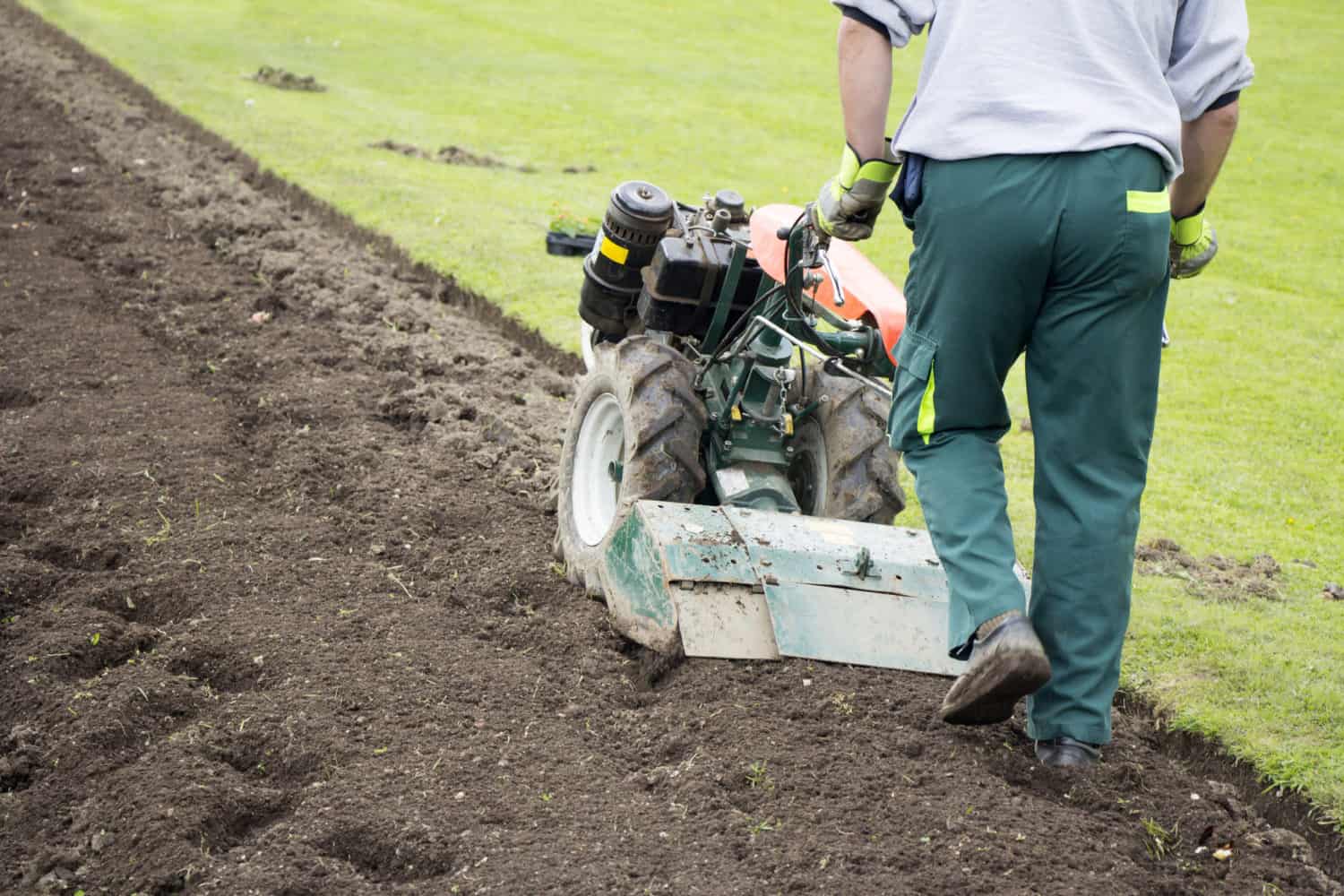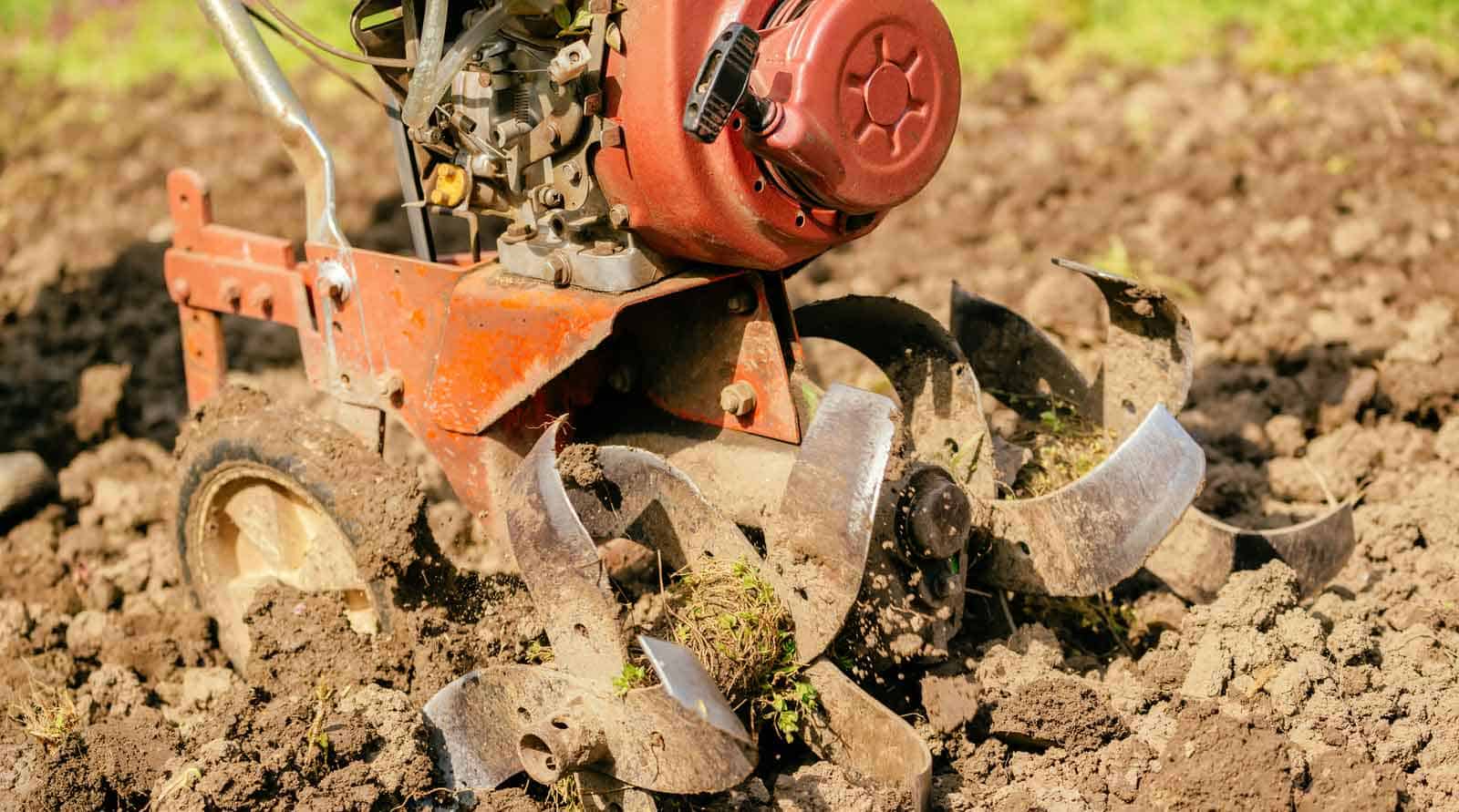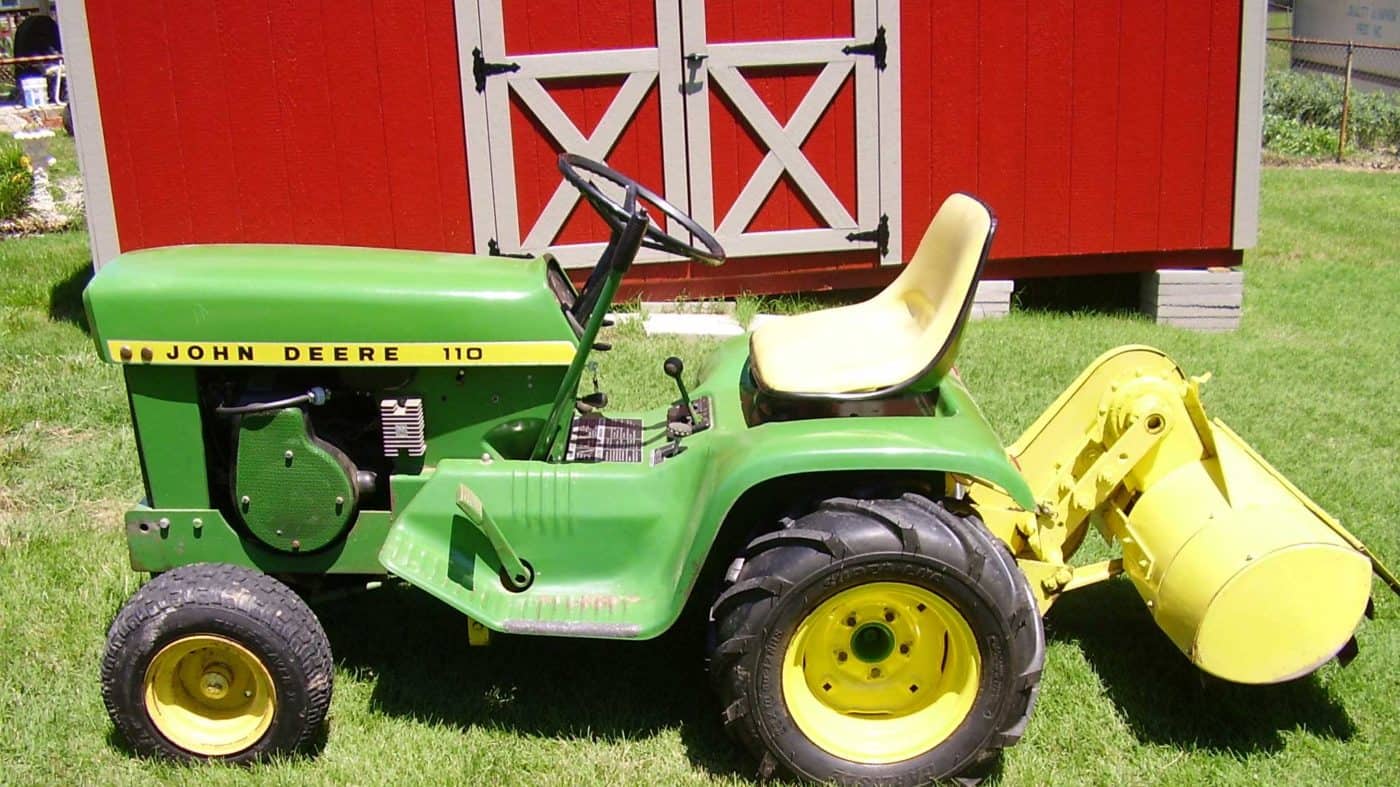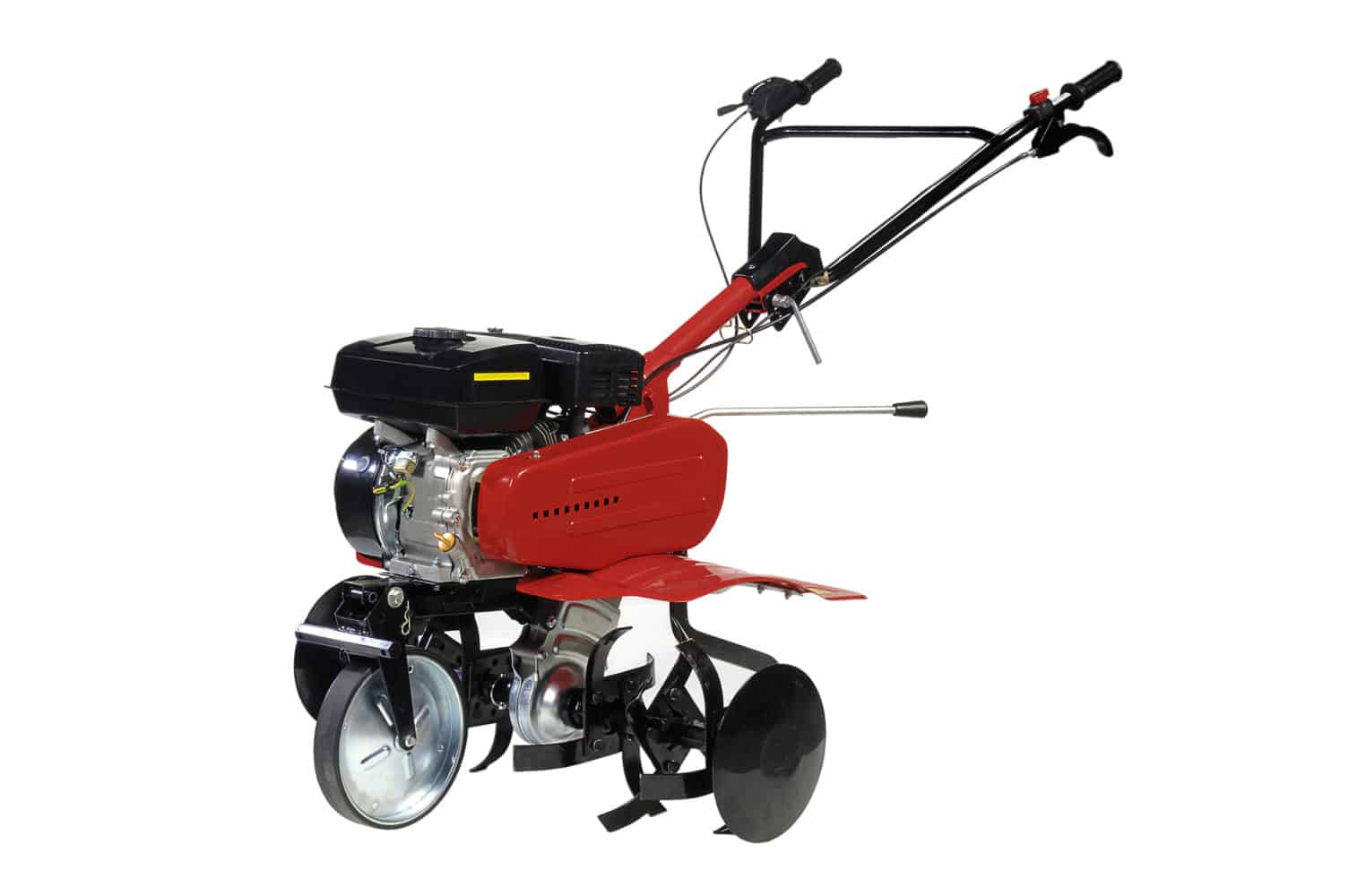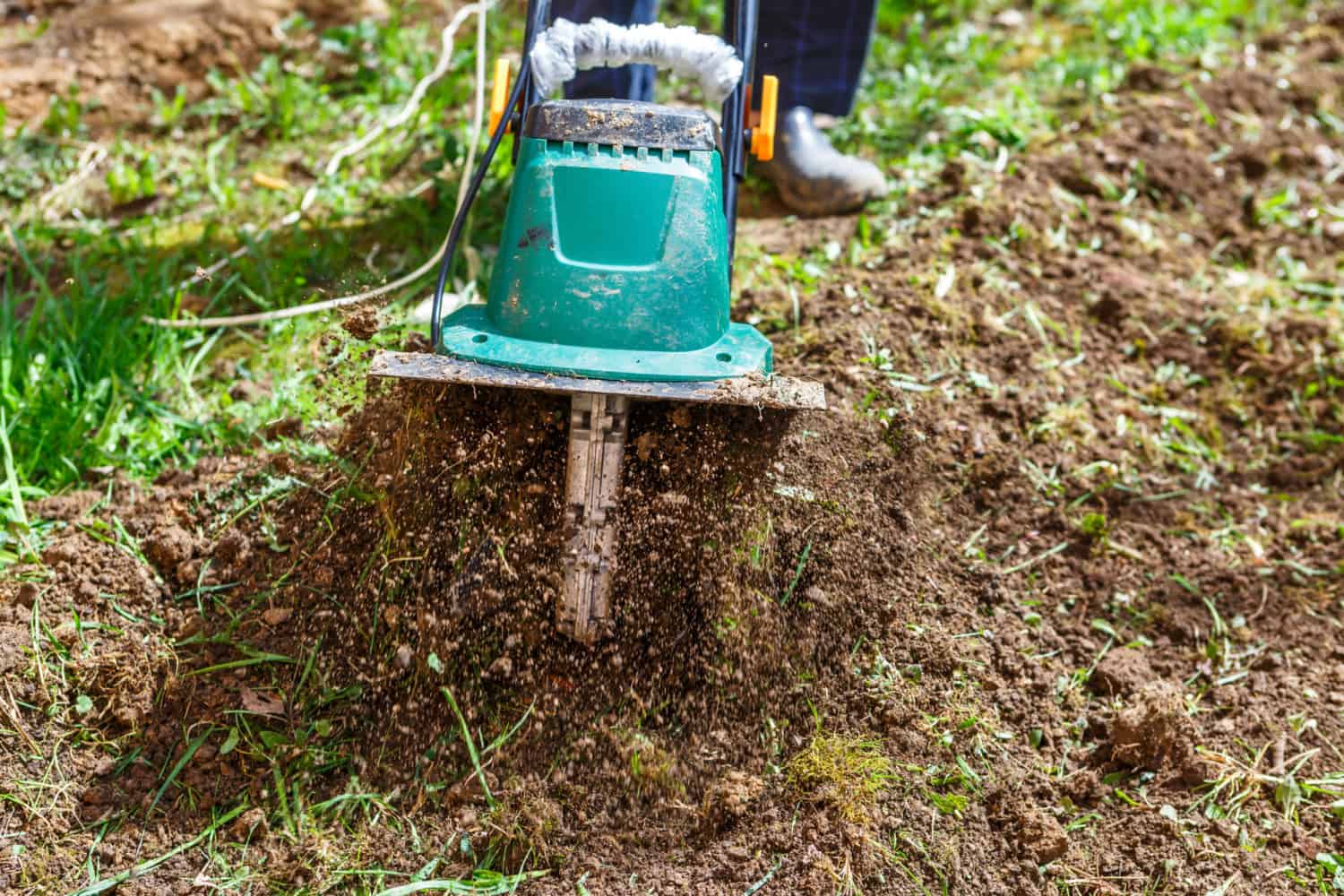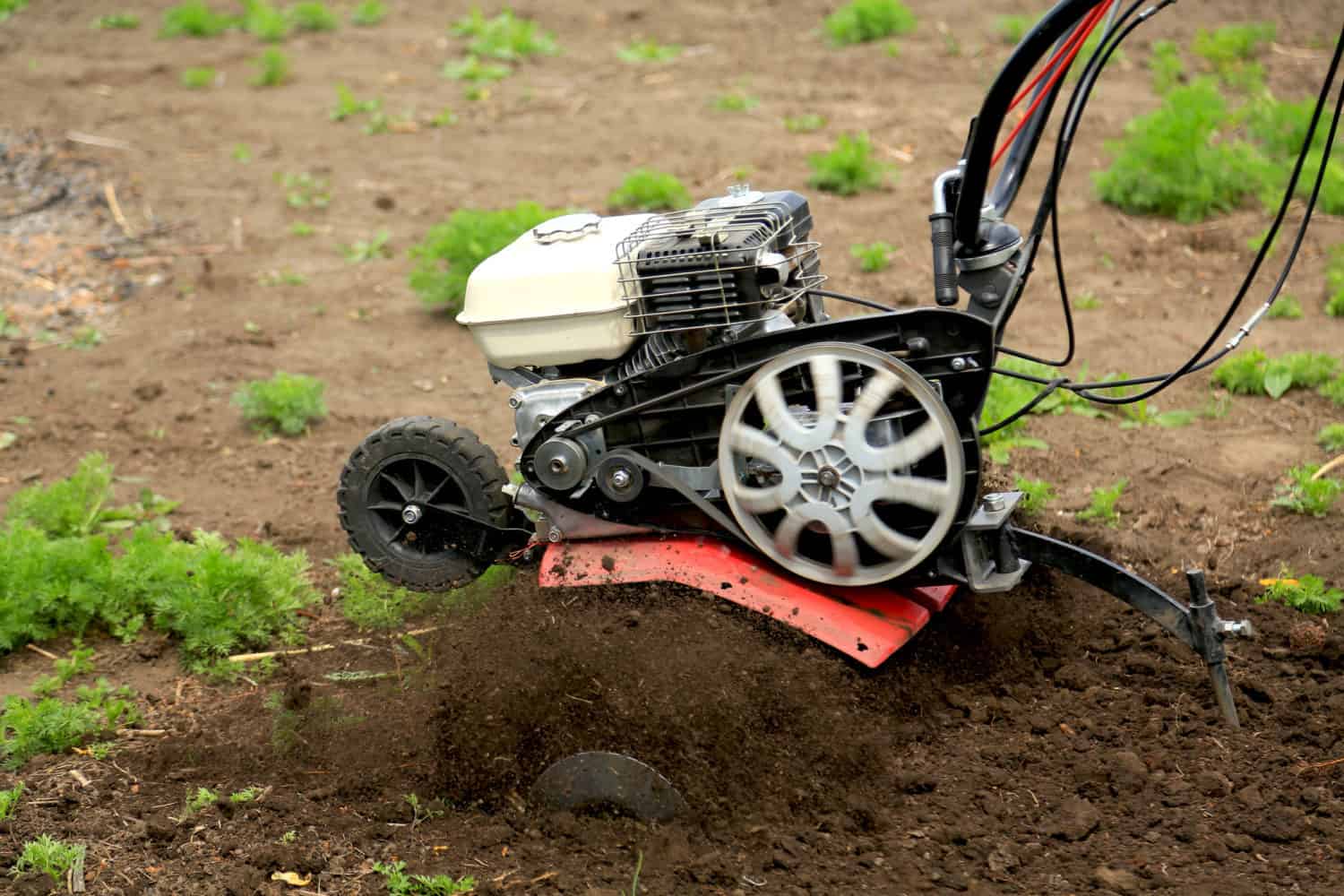Tillers are probably the most popular power tools among avid gardeners. They are used by home gardeners to aerate their lawns, especially throughout summer and springtime, to enable the lawn to grow. Tillers function by breaking up and loosening hard soil and the organic matter in preparation for planting.
A garden tiller is essentially designed to break up soil that is hard and compact to loosen dirt and smaller pieces that can be used for planting. Tillers are also used to prevent weeds from growing and to loosen the ground under the top spoil; this aids in the development of plants. There are different types of tillers, depending on the needs of the garden and the preferences of the gardener. Let’s discuss them below.
Contents
Front Tine Garden Tillers
Front tine garden tillers are gardening tools used for closer tiling, and they are among the most common types of tillers used by home gardeners. A front tine garden tiller can adjust the tine width, making it possible to till narrow spaces and rows with the three width settings.
This means that they can be used around obstacles as well as in small spaces. As the name suggests, a front tine tiller has forward rotating tines which are located in front of the machine. In order to provide weight to the machine, the engine sits slightly behind or above the tines. In addition, this machine has rear-mounted wheels that make it easy to push it from one place to another.
This machine’s wheels are situated at the back to make it easy to turn and reverse the machine in the garden. The forward rotating pines come in handy during the tilling process by pulling the machine forward, mainly because the machine is shorter and more maneuverable. These machines require more muscle power to operate mostly on untilled land, but it is generally suitable for small and medium garden plots, as well as gardens with many tight corners.
What is a Front Tine Garden Tiller used for?
- Breaking firm ground to loosen the soil
- Digging small and medium-sized gardens
- Weeding between rows
- Mixing soil and composting
- General garden maintenances
Read also: What are Garden Tillers Used For?
Mini Garden Tiller/ lightweight
As the name suggests, these garden tillers are a smaller version of front tine tillers, and they are also known as soil blenders. Mini garden tillers or mini cultivators are lightweight, thus portable, and the best work in smaller areas and gardens with relatively soft soil.
These machines are suited for raised bed gardens, and they are not suited for rocky soil or virgin soil. If you are using a mini garden tiller, it is advisable to dig in advance to loosen the ground.
What does a mini garden tiller do?
- Weeding to improve the aeration of the soil
- Plow and crumbling soil
- Mini garden tillers are used to hoe
- Loosening the ground under topsoil to enable crop roots to develop quickly and deeper into the earth
Rear Tine Garden Tillers
This type of tiller is suitable for larger and open garden areas, they have self-propelled wheels, and their tines are located at the machine’s rear side. These tillers are more complicated to operate, and because they have generally larger engines, they are also more costly compared to the rest. These tillers have drive wheels, whose purpose is to hold the machine in place to allow the tines to dig the soil to the desired length.
This makes it easier to control the machine and the tilling depth as well as allow for straight lines in the garden. In addition to being more expensive, these machines require more storage space as it is heavy and very powerful as well. Rear tine tillers are easier to use, especially when there are large roots or rocks involved, but they are not as easily maneuverable as front tine tillers.
Despite these machines being less maneuverable compared to other types, they are the easiest to use. This is because the tines of the rear tine garden tiller work independently, and its wheels are used for easier locomotion; they are your more powerful option of tillers.
What is a Rear Tine Garden tiler used for?
- Loosening hard and compact soil
- Breaking firm ground on a new garden
- Digging smaller farm plots
- Digging large gardens
Tow Behind Tillers
This tiller is a must-have for any gardener looking to build a garden of their own, regardless of the type of garden. A pull behind tiller, as it is sometimes called, is perfect for any landscaping project that requires tilling. This tiller works by being connected to the regular garden tractor or an ATV, which pulls the tiller behind as it turns up the soil to churn and break it.
Some tow behind tillers can be used with almost all types of towing vehicles and garden tractors, while others can be completely converted into towing vehicles. Pull behind tillers are necessary for a healthy garden or a food plot as they make general garden maintenance so much easier and manageable.
Tow behind tillers usually do not require their own power for propelling as they use power from the towing vehicle which provides the forward movement. As such, they can focus all their torque on turning their tines. This delivers more power and consequently breaks up soil that is heavily compacted more effectively.
What does a Tow Behind do?
- Turn and breaking heavily compacted soil
- Removing weeds between rows of vegetables
- Mix in compost and fertilizer
- Landscape a piece of land
- Plow garden waste back into the soil
- Loosen the soil for aeration
- Prepare land for planting
Electric Tiller
An electric tiller, also known as a rototiller or a cultivator, is an essential gardening tool, especially in the preparation of garden beds during autumn or spring. You should know that cultivators are not the same as tillers. This tool has rotating steel blades that allow it to loosen compacted soils perfectly in preparation for planting or sowing season. An electric tiller is very easy to operate and control; as such, it can be used inside greenhouses to prepare garden seeds.
However, it requires muscle as it is really heavy, especially when you are required to pull it back and forth for nice and deep garden beds. If you want to till and do an excellent job at it, you will need a tiller powered by electricity, not gasoline as an electric tiller makes a nice garden bed. Electric tillers are very invaluable garden tools, and they save gardeners hours of sweat, backache, and a lot of hard work.
What does an electric tiller do?
- Effectively mixes compost and manure into the soil
- Loosens compacted soils perfectly
- Weeding between plant rows
- Turning sod into a workable plot
Hand Tiller
Hand tillers, also known as manual tillers, are gardening tools that are powered by the gardener. These tillers are useful for mixing in compost and also for weed removal. These tillers are very easy to operate as they consist of three simple parts, depending on the specific model, make, and manufacturer.
A hand tiller is made of a long handle, a set of prongs, and a bladed wheel. The long handle’s purpose is to allow the gardener to work in a comfortable position, which is standing up rather than kneeling or bending. The tiller’s prongs or spikes aid the gardener dig the tiller into the soil as it is turned and mixed by the wheel.
What does a hand tiller do?
- Improves the quality of soil by loosening and aerating it.
- Minor soil work as well as deeper soil penetration
- It is an excellent tool for weed removal from between rows of plants in the garden
Vertical tine Tillers
This type of tiller is not nearly as common as other types as they are a relatively new option in the market. Vertical time tillers differ from the front tine tillers in that, rather than having their tines cut downward, they cut forward through the soil.
This is what makes them faster and easier to use on both virgin or new gardens to break ground. Vertical tine tillers create the smoothest and fastest tilling experience as the vertical tines work together, spinning in opposite directions to drill down instantly, and then forward through the soil at full depth. It is this forward motion of vertical tine tillers that reduces fatigue and minimizes vibrations.
What does a Vertical tine tiller do?
- Breaks ground on new gardens
- Plowing
- Stirring soil to prepare for planting
Different types of tillers are suitable for different gardeners. As such, it is important to consider your garden, its soil, types of uses intended for the tiller to take on, and the type of work you have before getting a tiller for your garden. When you have a tiller that is the right fit for you, you can save a lot of energy and resources while keeping your garden productive and very well maintained. The type of tiller you choose depends on the project at hand and how you want to accomplish it.

